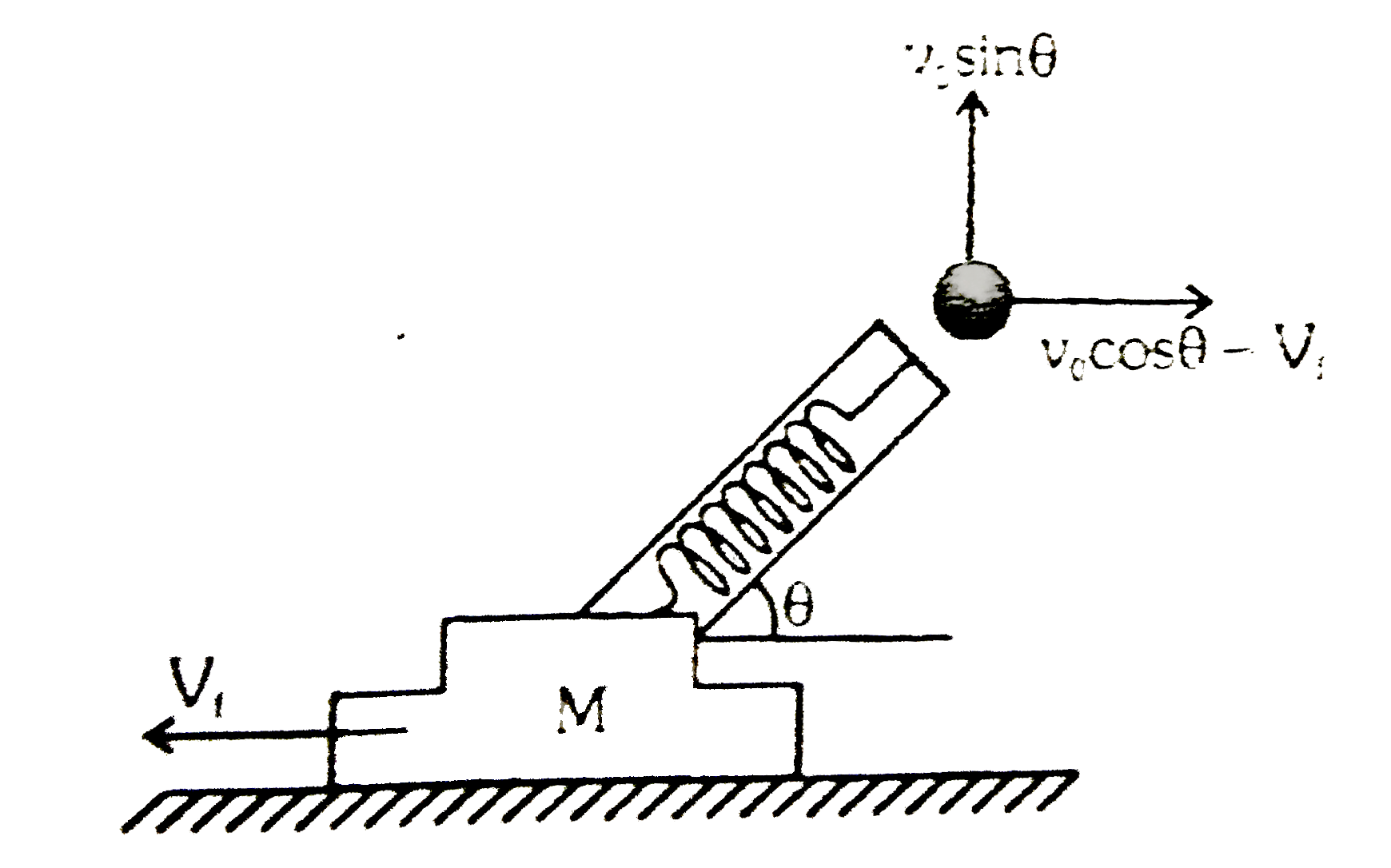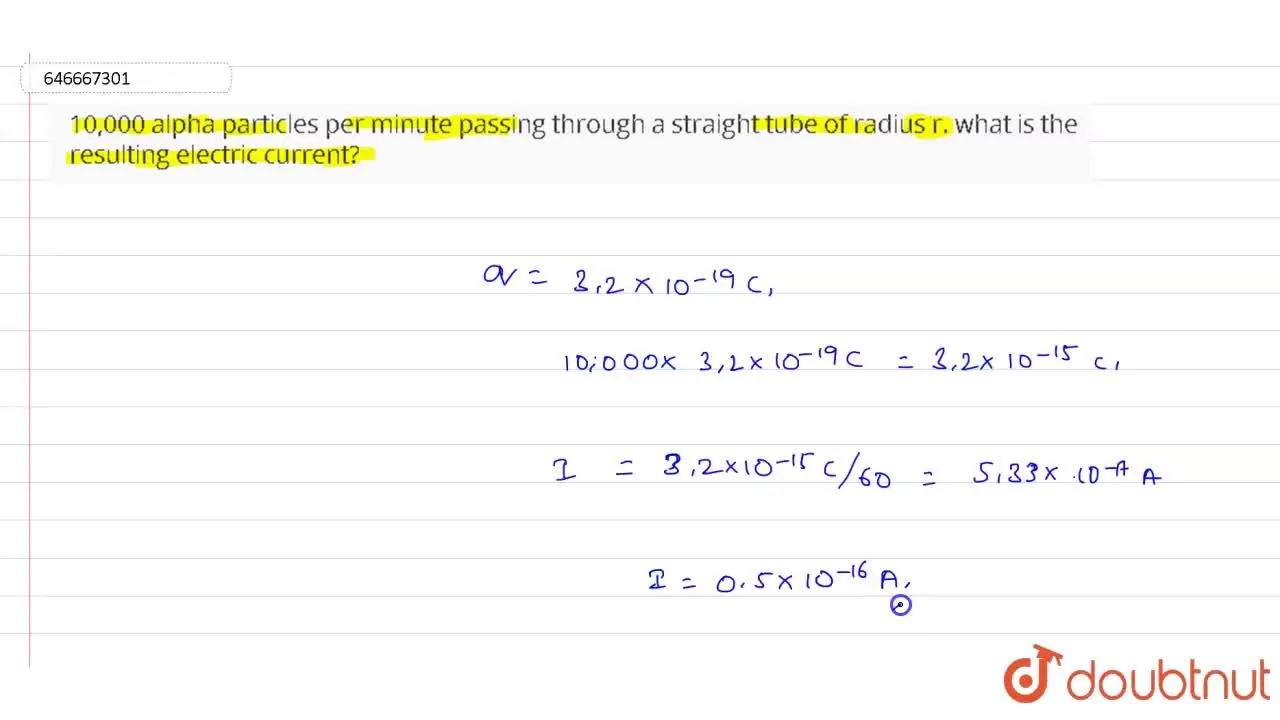The resistance 4R,16R,64R....∞ are connected in series. Find their equivalent resistance.
Take the physical system to be the gun and marble. Gravity and the normal force of the table act on the system. Both these forces are vertical. Since there are no horizontal external forces, the x component of the vector equation F=dPdt is 0=dPxdt According to equation (1), Px is conserved:
Px.initial=Px.final
 Let the initial time be prior to firing the gun. Then Px.initial=0, since the system is initially at rest. After the marble has left the muzzle, the gun recoils with some speed V1, and its final horizontal momentum is MV1, to the left. FInding the final velocity of the marble involves a subtle point, however. Physically, the marble's accelaration is due to the force of the gun, and the gun's recoil is due to the reaction force of the marble. The gun stops accelerating once the marble leaves the barrel, so that at the instant the marble and the gun part company, the gun has its final speed Vf. At that same instant the speed of the marble relative to the gun is v0. Hence, the final horizontal speed of the marble relative to the tablet is v0cosθ−Vf. By conservation of horizontal momentum, we therefore have
Let the initial time be prior to firing the gun. Then Px.initial=0, since the system is initially at rest. After the marble has left the muzzle, the gun recoils with some speed V1, and its final horizontal momentum is MV1, to the left. FInding the final velocity of the marble involves a subtle point, however. Physically, the marble's accelaration is due to the force of the gun, and the gun's recoil is due to the reaction force of the marble. The gun stops accelerating once the marble leaves the barrel, so that at the instant the marble and the gun part company, the gun has its final speed Vf. At that same instant the speed of the marble relative to the gun is v0. Hence, the final horizontal speed of the marble relative to the tablet is v0cosθ−Vf. By conservation of horizontal momentum, we therefore have
0=m(v0cosθ−Vf)−MVf
or Vf=mv0cosθM+m
By using conversation of momentum we found the final motion of the system in a few steps. To show the advantage of this method, let us repeat the problem using Newton's laws directly. Let v(t) be the velocity of marble at time t and let V(t) be the velocity of the gun. While the marble is going fired, it is acted on by the spring, by gravity, and by friction forces with the muzzle wall. Let the net force on the marble be f(t). The x equation of motion for the marble is
mdvxdt=fx(t) Formal integration of equation (3) gives
mvx(t)=mvz(0)+∫t0fxdt
The external forces are all vertical, and therefore the horizontal force fx on the marble is due entirely to the gun. By newton's third law, there is a reaction force- fx on the gun due to the marble. No other horizontal forces acts on the gun, and the horizontal equation of motion for the gun is therefore MdVxdt=−fx(t), which can be integrated to give
MVx(t)=MVx(0)−∫t0fxdt we can eliminate the integral by combining equation (4) and (5).
MVx(t)+mvx(t)=MVx(0)+mvz(0)
we have rediscovered that the horizontal component of momentum is conserved. What about the motion of the center of mass? Its horizontal velocity is
Rx(t)=MVx(t)+mvx(t)M+m Using equation (6), the numerator can be rewritten to give
Rx(t)=MVx(0)+mvx(0)M+m=0
SInce the system is initially at rest. Rx is constant, as we expect.
We did not include the small force of air friction. Would the center of mass remain at rest if we had included it? The essential step in our derivation of the law of conservation of momentum was to use Newton's third law. Thus, conservation of momentum appears to be natural consequence of newtonian mechanics. It has been found, however, that conservation of momentum holds true even in areas where newtonian mechanics proves inadequate, including the realms of quantum mechanics and relativity. In addition, conservation of momentumcan be generalized to apply to systems like the electromagnetic field, which possess momentum but not mass. For these reasons, conservation of momentum is generally regarded as being more fundamental than newtonian mechanics. From the point of view, Newton's thitd law is a simple consequance of conservation of momentum for interacting particles. For our present purposes it is purely a matter of taste whether we wish to regard Newton's third law or conservation of momentum as more fundamental.
Related Playlists
- BOOK - ALLENCHAPTER - CURRENT ELECTRICITYEXERCISE - EXERCISE-III26videos
CURRENT ELECTRICITY
- BOOK - ALLENCHAPTER - CURRENT ELECTRICITYEXERCISE - EXERCISE-IV A32videos
CURRENT ELECTRICITY
- BOOK - ALLENCHAPTER - CIRCULAR MOTIONEXERCISE - EXERCISE (J-A)6videos
CIRCULAR MOTION
- BOOK - ALLENCHAPTER - GEOMETRICAL OPTICSEXERCISE - subjective14videos
GEOMETRICAL OPTICS
Similar Questions
The equivalent resistance of two resistor connected in series is 6Ω and their equivalent resistance is 43Ω. What are the values of resistances ?
View SolutionResistance R,2R,4R,8R ...... ∞ are connected in parallel. What is their resutlant resistance will be
View SolutionTwo resistances R1=100±3ΩandR2=200±4Ω are connected in series . Find the equivalent resistance of the series combination.
View SolutionTwo resistances R1=100±3ΩandR2=200±4Ω are connected in series . Find the equivalent resistance of the series combination.
View SolutionFive equal resistance each of value R are connected in a circuit . Find equivalent resistance of the network between points A and C
 View Solution
View SolutionA voltmeter of resistance R1 and an ammeter of resistance R2 are connected in series across a battery oif negligible internal resistance. When as resistance R is connected in parallel to voltmeter reading of ammeter increases three times white that of voltmeter reduces to one third. Find the ratio of R1 and R2.
View SolutionSix equal resistance,eacch of resistance R are connected as shown in the figure.Equivalent resistance between P and Q is
_PHY_E05_276_Q01.png) View Solution
View SolutionTwo resistors of resistances R1=100±3 ohm and R2=200±4 ohm are connected (a) in series, (b) in parallel. Find the equivalent resistance of the (a) series combination, (b) parallel combination. Use for (a) the relation R=R1+R2 and for (b) 1R'=1R1+1R2 and ΔR'R'2=ΔR1R21+ΔR2R22
View SolutionSix resistors each of resistance R and two resistors each of resistance r are connected in the network shown below. The equivalent resistance between A and B is
 View Solution
View SolutionTwo resistors of resistances R1=100±3 ohm and R2=200±4 ohm are connected (a) in series , (b) in parrallel. Find the equivalent resistance of the (a) series combination , (b) parallel combination . Use for (a) the relation R=R1+R2and for (b) 1R=1R1+1R2andΔR'R,2=ΔR1R21+ΔR2R22
View Solution


